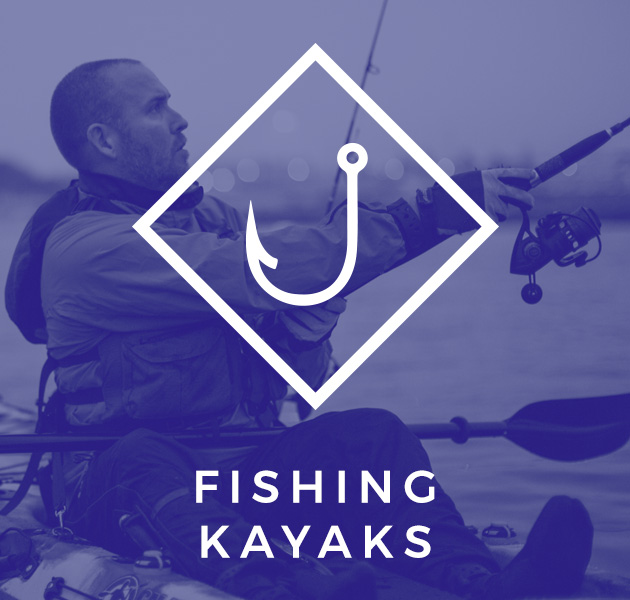
Technique scorned by some spinning or casting fishermen, well known and used by others, in kayak will help us at least to locate our predators. But let's see a little bit about what this troll is about;
Troll fishing, troll fishing or trolling is a fishing method that is based on the trawl of the lure, usually from a boat or kayak. These differ according to the environment in which the fishing takes place, since they can be done in sea or in inland waters.
Keep an eye on local or regional regulations, especially in inland waters.
In trolling fishing, artificial, colorful, and articulated baits are usually used, or natural, in order to make them very attractive for fish, since being a trawling technique, this artificial bait is intended or natural, simulates perfectly the way of swimming a grass fish, which is actually an artificial fish at the end of the fishing line.
This type of fishing is usually aimed at predatory fish. With this rig, both artificial and natural decoys are usually used.
We will mention above the use of natural baits and their presentation and preparation, while we will analyze more thoroughly the use of the different artificial in the troll.
In Kayak
This technique will allow us to work a lot of water surface while we paddle or go to our fishing spot or spot. My motto is that I paddle the rig ... out of the water I'm sure it does not fish. For others, it is practically the technique to use while exercising. Whether it is to try, as if it is the star technique to use one thing is clear; locate predators.
And it is especially effective in Kayak; when paddling and not using a motor, we print the decoy or natural bait an irregular and more natural movement and speed. We do not emit more noise than shoveling or even less if we propel ourselves to pedals. The paleo rhythm and the pause between it, make the movement of our deception much more "natural".
From my experience in my fishing zone, very over exploited, curry kayaks fish more than any motor boat.
Species
Here a huge range of possibilities opens up: I have captured all kinds of salt water predators from freshwater fish (from everything except cyprinids, for the moment). It is true that depending on the rhythm that we print our kayak, we can choose to capture some and other species. I explain; At higher speeds, we increase the chances of capturing tunids such as beautiful or saws, mackerels. tuna or even tuna, in very, very, very few occasions. At more moderate speeds will also enter from sparida to horse mackerel, sea bass, dentex, spikes, and a host of predators that enter a good artificial or natural bait. We are going to see a specific section of lures, rigs and baits to use.

LURES, RIGGINGS AND BAITS
Three blog entries could be used for this section. I will try to be brief;
From decoys to synthesize, I will classify them as floating or surface, those of medium or short bib, and finally those of big bib and sinking, that is, sunk that work at a deeper depth.
Yes, exactly, this first classification responds to the layer of water where our artificial works.
Depending on the species to be found, or where we believe that the area moves, predators will mount some artificial ones. There are those who choose to use two rods at the same time to cover the maximum water layer, carrying one with a surface lure and another with a sunken lure or a large bib. If you opt to put it into practice, you risk entanglement in case of double bites. Even carrying the canes in very open angle and at different distances.
FLOATING OR SURFACE
I would add if you allow me, with or without exciter, that little "little plane" that we place a meter away from our deception with the aim of causing splashes in the water that may attract predators. Very effective with tunidos, needles, spits, horse mackerel and mackerel.
To taste the colors. I will not enter brands or models. To the taste of the consumer. What you see that works, or that resembles the prey of your area ... It is not the same to seek or tempt snooks, which jacks or pretty. Although we all know that on more than one occasion we catch spears looking for sea bass, or pretty, etc. etc.
Think that you can use from small vinyls without plumb or with little weight that when paddling they will go up and act almost to surface of the water, as well as small minow or artificial fish, articulated or not, with little bib or without this, so that its radius of action be as superficial as possible.
Before continuing if you like, we review a little the main acronyms that we will find in our artificial fish;
There are three large groups, and within them an infinity of subtypes, but roughly they are:
1-floating; if we stop picking or paddling in this case the lure will automatically go afloat, to surface. it will not sink or stay static.
2-Suspending; When you stop paddling or picking up the fish, it will remain static at the depth of the lure's action.
3-SInking; the lure tends to sink.
Personally I prefer the last two unless we fish in shallow with rocky bottoms, because the condition of floating can avoid hooks and lose the artificial.
The decoys Suspending are, logically, mostly "hard" artificial lures, minow type or those that many still know as "rapalas". They are tremendously effective lures with paleo and pauses that we make; Appetizing injured grass fish for predators in the area.
Normally they are represented with the acronym SP, to be fixed in the boxes or the descriptions of the decoys or to ask in your store of confidence.
Finally and not for them less effective, much less, we find the "S" or sinking, that is, decoys that, if we stop rowing, simply sink by their own weight. Here the fan is eternal; jigs, teaspoons, "goats", leaded vinyl, all kinds of artificial fish, in short, most.
As we are interested in this case to look at the trolling with sunken lures, we should pay attention to two aspects; if they weigh "little", with the speed of rowing when tensioning the line, the lure will rise. If we stop rowing, the lure will sink to the bottom. Yes. I know it, you know it and perhaps it would not be necessary to remember it, but keep in mind above all the speed-weight relationship.
Nor will enter brands and models of lures to use. That if a case we leave for another blog entry.
As a recommendation and, as I wrote at the beginning of the article, try different weights and lures that resemble the grass that inhabits the area. For this three details; patience, test and experience of colleagues in the area. There is no more secret than that.
The lure that fishes the most is the one that is most time in the water normally.

APAREJOS
In order not to make it eternal if it seems to you, I will speak mainly of three; surface with exciter, simple and finally compound. Yes Yes. It is done. Why complicate it? I explain:
With Exciter; Rig destined to fish in surface or very near of this one in which we will help ourselves of a small excitador or avioncito (remember that we go in kayak and the majority to oars), it is not about to die in the attempt dragging and undergoing a rigging sobre- dimensioned. We will attach it to the main line with a remover, regardless of the size of this, it is more, I recommend you not cut in the size of this. At the other end of the exciter we will also place another remover. Very important this step in the planes that do not come already mounted, because of not doing so, our deception or shows will not swim correctly.
What to put decoy? Whatever you want! fewer jigs but they are in very restrained size! logical, no? From vinyl without plumb or little leaded, to pulpitos, feathers, artificial fish without bib or with little bib.
It is a very effective rig also in kayak, especially in kayak, because despite not reaching the speeds that we would reach by motor, paddling or paddle will allow us to catch almost any predator leaving about 50 meters of line.
Simple; By this I mean the use of a single decoy attached to our terminal. Depending on the layer of water where we think we can get more bites, we will use one or other lures. Again the speed will influence according to the species to fish; we will use faster and more nervous for tunidos, llampuas, serviolas, anjovas or palometones, and slower for seabass, horse mackerel, espetones ...
Compound; It is based on the placement of feathers, vinyls, pulpits or small vinyls in our line in front of a somewhat larger decoy. Surely you have seen on more than one occasion a "machine gun" more or less extensive, with more or less small deceptions attached at a distance from a normal artificial fish. I will not tell you that I have not used them, and even more in my beginnings, but every time I am more in favor of not doing it or, in case that I use this type of assemblies do not put in action of fishing more than one or two hooks to part of the artificial fish The reason, part logically of sportsmanship, is that in case of multiple bites we will not enjoy the catches as if they were one at a time: each fish pulls for a different side, winding in many cases the line ... I do not compensates.
Lethal for anyone who wants jacks and catches to use live or simply to capture them.
I recommend, then, the use of one or two feathers already assembled, or even better if you assemble them yourself. Alternate and try the use of pulpitos and small vinyls.
Curri with natural bait
There are many tutorials on how to embody and prepare natural bait for trolling. As a summary I will tell you that the spices most used for this modality are the spit and the needle, perhaps adding the horse mackerel. Of the different assemblies that you can consult on YouTube or social networks, stay with the one who; 1- Do not unnecessarily infest pots and hooks, 2- Use preferentially simple ones and not pots, as they will damage less to the predator and 3- that in the assembly include the detail, for my indispensable, to close the mouth to the fish, either with silk thread or with wire.
Teams
My advice is that you do not compile. We do not need a great curri team to fish in kayak. It's logic; in case of a big catch we can not get to "pump" a tuna as if we were in a bigger boat ...
There are a multitude of teams composed of specific rods and reels that will be fully adapted to this technique. Or you can, as most do, take advantage of your average or stronger equipment for this technique. The same rods that you use for jigging will be more than valid. Do not also put the most light rods you have that you will destroy in two days; think of the continuous resistance of the lure in the water when paddling! An action rod 15-50 should have more, a little more if you are going to use heavier lures. The reel does not need to exceed size 5 or 6000.
Finally as you can see, but you have already checked, that more bib or weight more cost you paddle.
By the way, as in spining or jigging, I recommend 100% the use of braided with Fluorocarbon terminal. More resistance with less thickness and diameter of the line.
Good responsible fishing
We leave you with a link to the video summary of this entry.







